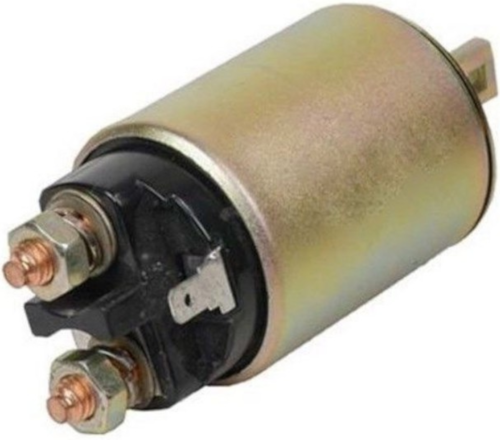VW Fuses Switches and Relays
Single Pole Single Throw
Electrical switches comes in several configurations, but are normally classified into only four types. The most common switch is the single pole single throw, abbreviated as SPST. This implies it has one contact that is normally open —abbreviated N/O— which is closed when the switch is flicked. This type of switch is either on-or-off / open circuit or closed circuit. This switch also comes in the form of a push button switch which is normally open and closes when pushed but when released it open once again. It is also known as push-to-make, abbreviated PTM. An example of a PTM is a door bell switch or a cars hooter or the individual keys on a keyboard. Push button switches also comes in a normally closed configuration and opens when pushed, but when released, it closes again. Commonly known as push-to-break, abbreviated PTB. An example of a PTB switch is used to release a door, held closed by an electromagnet. |
| Suzuki GS500 GSXR1100, Honda VT 500 VT600 VT700 VF750, Kawasaki ZX1000 ZX 1100 Solenoid |
Single Pole Double Throw
The second and slightly more advanced switch is the single pole double throw switch, abbreviated as SPDT. This is a three terminal switch which toggles between two states when switched. SPDT are in essence two switches in one package. The one switch is normally open whilst the other is normally closed. By flicking the switch the two switches reverses their roles. The normally open switch is then closed and the normally close switch is opened. By connecting a SPDT at either end of a long passage to turns the lights or off, one is able to enter the passage at one end, turn the lights on and when exiting the passage at the other end switch the lights off. SPDT can be used as a SPST in an application by just using the centre contact and either one of the other two contacts, depending on what type of switch you need, N/O or N/C. SPDT switches are also available with a centre-off position, known as momentary (ON)-OFF-(ON) switch. |
| Volkswagen 4H0951253 Starter Relay 645 and 1J0906381A Fuel pump relay 109. |
Double Pole Single Trow
The third type of switch is the DPST and is similar to the SPST switch in operation except that it has a pair of on-off switches that switch together. It is commonly used to connect / interrupt both the live and neutral supplies in a circuit simultaneously or it may be used to switch two separate circuits simultaneously. Computer power supplies have DPDT switches as a safety feature to avoid getting electrocuted whilst working on the power supply if only one pole was switched. Double Pole Double Throw
The fourth type of switch is the DPDT and is similar to the SPDT switch in operation except that it has a pair of on-on switches that switch together. It is commonly wired to reverse the direction of a DC motor or be used to switch between to different colour LEDS. DPDT can be used as a DPSP in an application by using the centre contact and either one of the other two contacts and duplicated on the paired switch. DPDP switches are also available with a centre-off position, known as momentary (ON)-OFF-(ON) switch.
Switches
Switches switches come in various shapes among which are Toggle switches, limit switches, reed switches, micro switches, mercury switches, rotary switch, slide switch, rocker switch, pneumatic limit switches, selector switches and getting the right switch for the job cam sometimes be tricky and may be better suited by using a relay. Many switches also come with a rubber jacket to make it waterproof. However that doesn't imply you can submerse the switch in water, it is more a splash proof cover than a water proof one. There are switches suited for using under water, for example a floating mercury switch. when a vat or tank is filled with liquid, the switch would float in the upright position but when the liquid falls below a certain lever the switch would float upside down and trigger. Perhaps turning on a pump that would fill the tank or vat once again.Whats a relay?
Having discussed switches you may ask what does switches have to do with relays. The simple answer is, a relay is essentially a remotely controlled switch. Relays are controlled electrically rather than mechanically, hence they're known as electro-mechanical relays. They are commonly used in automotive design, where high current devices can be switched from a cockpit fairly cheaply. In stead of using long lengths of thick high current cable and a substantially heavy duty on-off switch to control a heater or a motor situated some distance from the driver; a small low current switch and a length of thin low current cable and a relay switch with heavy contacts would suffice. Every relays has a solenoid configured as an electromagnet. So when the solenoid is activated by a trigger voltage, the electromagnet pulls a set of heavy duty contacts to make or break a circuit. Relays are versatile and can function as a simple spst switch, or a more advance spdt switch of a dpst switch or a dpdt switch depending on the circuity it needs to control.